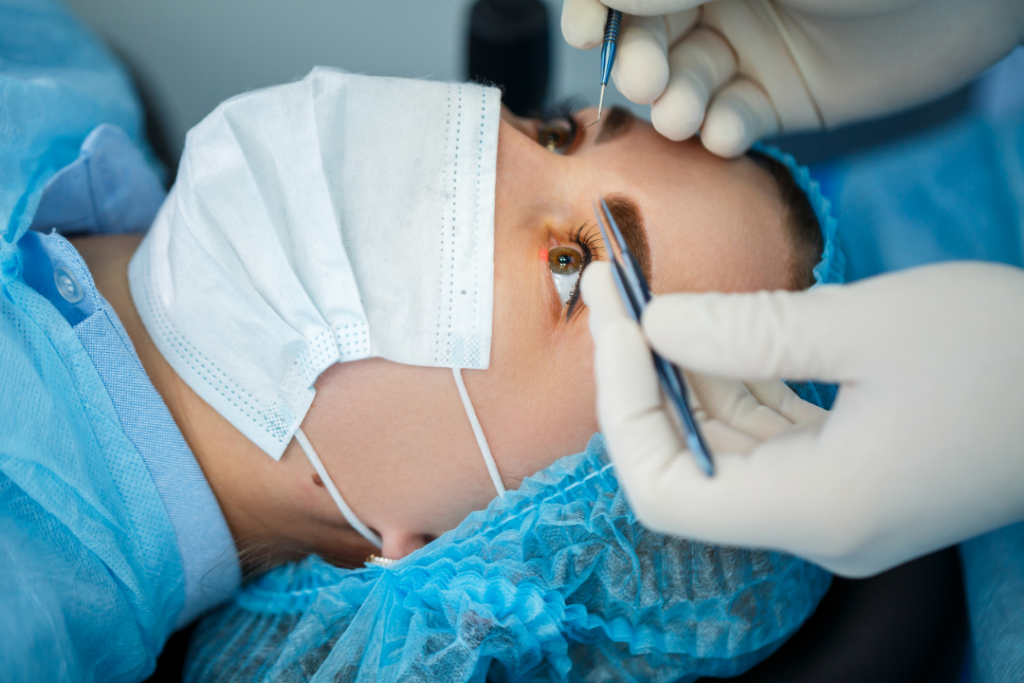Introduction
Glaucoma is a progressive eye disease that can lead to irreversible vision loss if left untreated. While glaucoma can be managed through various treatment methods, including medications and laser therapies, glaucoma surgery plays a vital role in advanced cases or when conservative treatments are ineffective. This article aims to provide a comprehensive overview of glaucoma surgery, including its types, benefits, and considerations, along with discussing the causes of glaucoma and potential future cures for this condition.
I. Glaucoma: A Silent Threat to Vision
Glaucoma is a group of eye conditions characterized by damage to the optic nerve, which transmits visual signals from the eye to the brain. The primary cause of eye diseases glaucoma is usually an increase in intraocular pressure (IOP), resulting from fluid buildup in the eye. However, glaucoma can also develop without elevated IOP, known as normal-tension glaucoma.
II. Understanding Glaucoma Surgery
Types of Glaucoma Surgery
a) Trabeculectomy: Trabeculectomy is a commonly performed glaucoma surgery where a small drainage channel is created to improve the outflow of fluid from the eye, reducing IOP.
b) Tube Shunt Implantation: Tube shunt implantation involves placing a small tube with a drainage device in the eye to redirect excess fluid, lowering IOP.
c) Minimally Invasive Glaucoma Surgery (MIGS): MIGS procedures, such as trabecular meshwork bypass stents or laser-assisted surgeries, aim to improve aqueous humor outflow while minimizing surgical trauma.
d) Cyclodestructive Procedures: These surgeries involve reducing fluid production in the eye by destroying or blocking the ciliary body responsible for fluid production. You can also read about Regaining Clarity: Exploring Cataract Eye Surgery in Sydney by clicking here.
Benefits of Glaucoma Surgery
Glaucoma surgery offers several benefits, including:
- Lowering intraocular pressure: The primary goal of glaucoma surgery is to reduce IOP to prevent or slow down further optic nerve damage, preserving vision.
- Decreasing reliance on medications: Successful glaucoma surgery may reduce the need for multiple medications or eye drops, simplifying the treatment regimen.
- Long-term control: Glaucoma surgery can provide sustained IOP control, minimizing the risk of disease progression and vision loss over time.
III. Causes and Risk Factors of Glaucoma
- Elevated Intraocular Pressure (IOP): Increased IOP is a major risk factor for glaucoma. It occurs when the fluid within the eye, called aqueous humor, does not drain properly, leading to a buildup of pressure.
- Family History: Glaucoma can be hereditary, with a higher risk for individuals having a close family member with the disease.
- Age: The risk of developing glaucoma increases with age, particularly after the age of 60.
- Ethnicity: Certain ethnic groups, such as African Americans, Hispanics, and Asians, are more prone to certain types of glaucoma.
- Medical Conditions: Conditions like diabetes, high blood pressure, and cardiovascular diseases can increase the risk of developing glaucoma & ED
- Eye Trauma: Severe eye injuries or trauma can cause glaucoma, either immediately or later in life.
IV. Promising Advances in Glaucoma Treatment
While there is currently no definitive cure for glaucoma, ongoing research and technological advancements offer hope for future breakthroughs. Some promising developments include:
- Gene Therapy: Scientists are exploring the potential of gene therapy to correct gene mutations associated with glaucoma, aiming to halt or reverse disease progression.
- Neuroprotective Strategies: Research is being conducted to develop therapies that protect and promote the survival of retinal ganglion cells, which are damaged in glaucoma.
- Stem Cell Therapy: Stem cell research holds promise for regenerating damaged optic nerve tissues, potentially restoring vision in glaucoma patients.
- Artificial Drainage Devices: Novel drainage devices and implants are being developed to enhance fluid outflow from the eye, providing more effective and customizable treatment options.
Conclusion
Glaucoma is a complex eye disease that requires early detection, careful management, and sometimes surgical intervention to preserve vision. Glaucoma surgery, such as trabeculectomy, tube shunt implantation, and minimally invasive procedures, offers significant benefits in lowering intraocular pressure and preserving vision. Understanding the causes and risk factors of glaucoma is crucial for early detection and intervention. While there is no cure for glaucoma at present, ongoing research in gene therapy, neuroprotection, stem cell therapy, and advanced drainage devices provides hope for future advancements in glaucoma treatment. Regular eye examinations and timely treatment are key to maintaining healthy vision and preventing vision loss caused by glaucoma.

